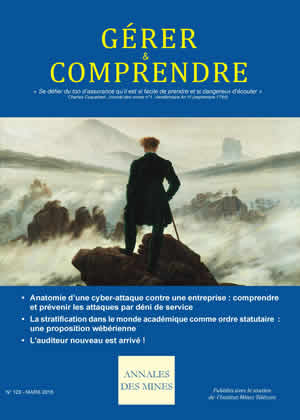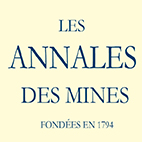| |

|
|
 N° 123 - Mars 2016 N° 123 - Mars 2016
« L’innovation n’est pas un long fleuve tranquille »
Analyse sociotechnique de la trajectoire d’une innovation grand public : le bâton de randonnée automatique
Par Julie HALLÉ
Chercheure associée, Université Lyon 1 (L-ViS)
Bénédicte VIGNAL
Maître de conférences, Université Lyon 1 (L-ViS)
et
Bastien SOULÉ
Professeur des universités, Université Lyon 1 (L-ViS)
Cet article propose un récit a posteriori de la trajectoire d’une innovation sportive grand public dans le domaine de l’outdoor, le bâton de randonnée automatique. En nous appuyant sur une approche sociotechnique, notre objectif était d ’analyser les différentes phases du développement de ce produit en rendant compte des formes variées prises par l’objet et des influences multiples qui l’ont modelé, imposant son lot de compromis et de traductions. Pour cette étude, nous avons procédé à des observations de terrain et à douze entretiens semi-directifs auprès d’acteurs du réseau constitué autour de cet objet. Les principaux résultats pointent l’absence de linéarité et la lenteur du processus, la nouveauté n’ayant pas permis, à elle seule, d’engendrer la diffusion et le succès de cette innovation.
 Télécharger gratuitement l'article Télécharger gratuitement l'article
 Retour au sommaire Retour au sommaire
 N° 123 - March 2016 N° 123 - March 2016
“Innovation is not a long quiet river” - A sociotechnical analysis of an innovation for the general public: automatic hiking sticks
Julie Hallé,
associate researcher, ViS Laboratory, University Lyon 1;
Bénédicte Vignal,
associate professor, ViS Laboratory, University Lyon 1;
and
Bastien Soulé,
professor, ViS Laboratory, University Lyon 1
This ex post facto description of the development of an innovation in outdoor sporting goods for the general public - automatic hiking sticks (or trekking poles ) - comes out of a sociotechnical approach with the objective of analyzing phases in this process, as the product took various forms, underwent many influences and was shaped by compromises. For this study, fieldwork was conducted, and twelve semidirective interviews were carried out with persons in the network formed around this product. The major findings are that this process was not linear; it was slow; and novelty alone did not ensure the product’s diffusion and success.
 Retour au sommaire Retour au sommaire
 N° 123 - März 2016 N° 123 - März 2016
„ Innovation ist kein langer, ruhiger Fluss“
Eine soziotechnische Analyse der Entwicklung einer Innovation für das breite Publikum : der automatische Wanderstock
Julie Hallé,
assoziierte Forscherin, Université Lyon 1 – Laboratoire ViS,
Bénédicte Vignal,
Universitätsdozentin, Université Lyon 1 – Laboratoire ViS,
und
Bastien Soulé,
Universitätsprofessor, Université Lyon 1 – Laboratoire ViS
Dieser Artikel ist ein Rückblick auf den Entstehungsprozess einer Innovation auf dem Gebiet der Outdoor-Ausrüstungen für das breite Publikum, für das der automatische Wanderstock konzipiert worden war. Auf der Basis einer soziotechnischen Methode verfolgten wir das Ziel, die verschiedenen Phasen der Produktentwicklung zu analysieren, in denen das Produkt unterschiedliche Formen annahm und durch vielfältige Einflüsse geprägt wurde, die immer wieder Kompromisse und Neuorientierungen notwendig machten. Für diese Studie stützten wir uns auf umfassende Daten über die Outdoor-Aktivitäten und auf semidirektive Gespräche mit verschiedenen Akteuren, die an der Entstehung dieses Objekts beteiligt waren. Die wichtigsten Ergebnisse machen die mangelnde Linearität und die Langsamkeit des Prozesses deutlich, nach dessen Abschluss die Neuheit allein nicht dazu ausreichte, den Vertrieb und den Erfolg dieser Innovation zu sichern.
 Retour au sommaire Retour au sommaire
 N° 123 - Marzo 2016 N° 123 - Marzo 2016
La innovación no es un juego de niños
Análisis socio-técnico de una innovación para el público en general, el bastón de marcha automático
Julie Hallé,
investigadora asociada, Universidad Lyon 1 - Laboratorio ViS,
Bénédicte Vignal,
profesora asociada, Universidad Lyon 1 - Laboratorio ViS,
y
Bastien Soulé,
Profesor titular, Universidad Lyon 1 - Laboratorio ViS
Este artículo propone una descripción a posteriori de la trayectoria de una innovación deportiva para el público en general, en el ámbito del outdoor: el bastón de marcha automático. Siguiendo un enfoque socio-técnico, nuestro objetivo era analizar las distintas fases del desarrollo de este producto, presentando las diversas formas adoptadas por el objeto y las influencias múltiples que lo han moldeado, con su conjunto de concesiones e interpretaciones. Para este estudio, hemos llevado a cabo observaciones de terreno y doce entrevistas semi-directivas con agentes de la red existente en torno a este objeto. Los principales resultados demuestran la falta de linealidad y la lentitud del proceso. La novedad no logró, por sí sola, generar la difusión y el éxito de esta innovación.
 Retour au sommaire Retour au sommaire
|
|




